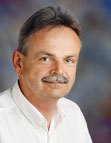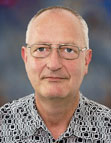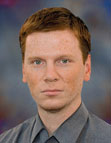ABICOR Innovation Award 2008 (3rd Place)
 Dr.-Ing. Gerd Heinz (GfaI Berlin)
Dr.-Ing. Gerd Heinz (GfaI Berlin)
 Dipl.-Ing. Frank Hofmann (IWF Berlin)
Dipl.-Ing. Frank Hofmann (IWF Berlin)
 Dr. rer. nat. Heinz Schöpp (INP Greifswald)
Dr. rer. nat. Heinz Schöpp (INP Greifswald)
 Phys. Gregor Gött (INP Greifswald)
Phys. Gregor Gött (INP Greifswald)
Real-time spectral regulator for pulse welding machines1
Valuable information is hidden in the spectrum of the plasma of pulse arcs. Energy introduction, metal vapour concentration or electrode temperature can be determined using the emissions from individual lines. If you want to use this information to stabilise the plasma when using mixed compositions like Al-Mg or St-Zn, you must use spectral analysis methods to penetrate the microsecond range. With the current pulse procedure, the modification of the plasma temperature is in the range of several million Kelvin per second.
This speed range is hardly accessible for spectrometric regulators at this time. The evaluation of many individual lines requires calculating time and the exact material consistency must be specified. The literature states that, for example, a spectrometric approach is known which can provide a temperature statement after twenty milliseconds. The individuality of each pulse, however, requires a much faster regulation method for pulse times of 0.5 to 5 milliseconds.
Working in parallel, the project partners were able to show that groups of lines of a particular spectral range (GFaI Berlin/TU Berlin) show similar emission time behaviour as the time functions of individual lines (INP Greifs- wald). From the dynamics of two line groups to each other (metal/inert gas) it is possible to estimate the energy introduction, the metal vapour concentration or the temperature by using their relative line group dynamics.
This created a very simple, differential regulation method which comes to a temperature statement within ten microseconds. This means that it is fast enough to regulate the energy entry for every pulse in real-time. Based on a differential principle, the procedure functions relatively independently of the soiling of the optic. For each material pair (wire/base material), a temperature setting is made via the plate efficiency of two spectral selective photodiodes.
The prototype of the spectral regulator requires approximately one hundred components. Two operation amplifiers and two spectral selective photodiodes form the core. The spectral regulator controls a pulse welding power source via an RS485 interface. It works in both quasi-continuous as well as in pulse mode. As of November 2007, a prototype has been running tests in the welding laboratory of the Berlin technical university and there it is controlling a welding machine.
The use of the regulator makes it possible to increase the pulse current by up to 30% above standard values. Alongside the increased process stability, this also brings about an improvement in the magnetic constriction of droplet transfer.
The spectral regulator and regulation method have been patented at the request of the welding machine manufacturer represented on the project committee.
The total European sales volume for MIG/MAG/WIG units in 2002 came to 750 million euros, with a percentage proportion of approximately 5% this is expected to be over 50 million euros from the European market for spectrally regulated units in 2015.
Other works target a rapid product introduction, a better understanding of the regulated processes, the physics of line groups integrals of different material combinations, the investigation into mixed compositions and the suitability for thin materials. In future, the control parameters of the welding machine (pulse current, base current, control times) should also be reduced.
1Promoted by BMWi, Project 14607 BG (AiF/IGF) from 1.2.2006 to 31.12.2007, recipient:
GFal e.V. Berlin; Places of research: GFaI, INP Greifswald, TU-Berlin IWF
